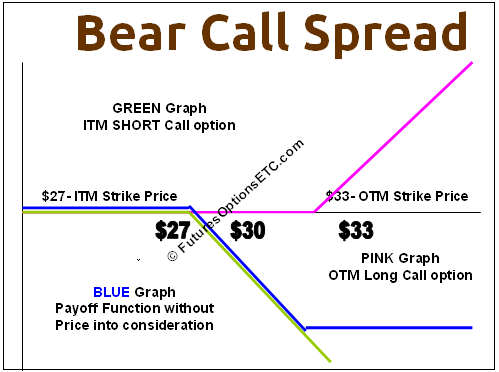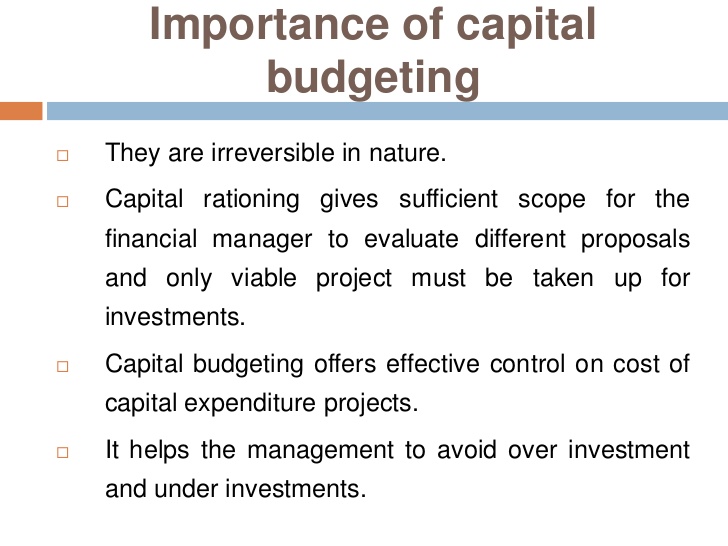Content

The company must consider these time and money costs when deciding which method to use. While absorption costing has its uses, it also has some significant disadvantages that should be considered before using this method. These are materials used in the production process, which includes the cost of purchasing each material. Direct labor includes the factory labor costs required to construct a product.
The combined company generally gets a new name and a separate legal life after the merger, with the assets and obligations of both companies. Company amalgamation might take the form of absorption or consolidation. Let’s suppose the absorption includes compensation to the absorbed company’s shareholders, debt holders, and creditors. Cost allocation software can make it easier for small businesses with limited staff resources. You might also lack experience in this area by calculating these numbers for you automatically. You just need an idea about what areas need better management so your company can grow.
It’s Required For Tax Purposes- Advantages Of Absorption Costing
Inventory valuation systems divide labor, materials purchases, and factory overhead costs between items sold and those still in stock. Absorbed cost calculations produce a higher net income figure than variable cost calculations because more expenses are accounted for in unsold products, which reduces actual expenses reported. Also, net income increases as more items are produced, because fixed costs are spread across all units manufactured.

This ensures that your company is putting its money where it can do the most good. That is, if you’re already familiar with this direct costing method, you know all of the aspects it covers and how it can help your business. It gives reasonably accurate results when the quality and prices of raw materials do not differ substantially. Actual costing rates exist at the volume and mix of business necessities the company has structured, also known as practical capacity. Another factor to consider in determining which of the two primary overhead allocation methods is the cost of collecting and analyzing information.
If the purchasing business does not make the lump sum payment, we must assess the net worth of the assets seized. It can be hard to divide this type of information without help from accountants or bookkeeping services. Our goal is to deliver the most understandable and comprehensive explanations of financial topics using simple writing complemented by helpful graphics and animation videos. We follow strict ethical journalism practices, which includes presenting unbiased information and citing reliable, attributed resources.
Instead, this organization must estimate the market price by estimating the cost of manufacturing the products under each contract and then adding a target margin to generate an acceptable profit. In developing its cost estimates, the firm calculates what is absorption in accounting annual costing rates based on the prior year’s actual activity. Some people argue that it’s necessary to accurately track production costs, while others believe it leads to unfair cost allocations and ultimately hurts the manufacturing process.
Therefore, it becomes necessary to charge overheads to the cost of products, jobs, and processes according to certain well-established norms and scientific reasoning. Absorption costing will be the better option if a company wants to manage its inventory levels and make decisions based on that. However, most companies have units of product in inventory at the end of the reporting period.
The Accounting Gap Between Large and Small Companies
This information can be used to make important strategic decisions about pricing, production levels, and other factors that affect the bottom line. Absorption costing can help managers identify areas where costs can be reduced and improve overall efficiency. Another advantage of absorption costing is that financial institutions and investors generally accept it. This makes it easier to obtain financing and raises confidence in the financial statements. A final advantage is that it is relatively easy to implement and maintain. This is especially true when compared to other costing methods, such as variable costing.

The goal is to create a more accurate picture of the true cost of each product, which is important information for pricing and making other strategic decisions. Some argue that it overallocates fixed costs to products, which can lead to decision-making that does not consider the true variable costs of production. Others believe that it provides a more accurate product cost by considering all relevant manufacturing costs. Indirect costs are those costs that cannot be directly traced to a specific product or service.
The Role of Absorption Costing in Decision-Making and Planning
Variable costing includes only variable costs sustained in the production process. A company’s profit level can appear higher than it is in a given accounting period due to cost through absorption costing. This is because revenues are not affected by fixed costs unless all manufactured products are sold. Based on absorption costing methods, the additional unit appears to produce a loss of $0.50, and it appears that the correct decision is to not make the sale.
Instead, they are recorded as assets in the form of inventory until the units produced are sold. The variable manufacturing overhead cost would be things like the electricity used to run the machinery, while the fixed manufacturing overhead cost would be the cost of the factory itself. In conclusion, absorption costing can have significant impacts on financial statements and decision-making within a company. While it can provide valuable information, it is important for managers to understand the limitations of this method and consider its potential impacts when making strategic decisions. Absorption costing assigns a portion of fixed costs to each unit produced, while other methods may treat all fixed costs as period expenses. (3) When units produced is less than units sold, variable costing yields the highest profit.

Finance Strategists is a leading financial literacy non-profit organization priding itself on providing accurate and reliable financial information to millions of readers each year. It is rare for applied overheads to agree with actual overheads; a difference is always likely to exist. If the absorbed amount exceeds the actual overhead, the difference is termed overapplied overhead. The product of this calculation will indicate the amount of overhead to be applied (or charged) to production for the period. This method is suitable for labor-intensive industries in which manual labor is a dominant factor in production. This method is usually applied in cases where labor is the main factor in production.
Direct Labor
This means that if the number of units sold is less than the number of units produced, some of the fixed manufacturing overhead will remain in the inventory and will not be expensed. On the other hand, if the number of units sold is more than the number of units produced, some of the fixed manufacturing overhead from the previous periods will be expensed. Selling, general, and administrative costs (SG&A) are classified as period expenses. In addition to its impact on financial statements, absorption costing can also affect decision-making within a company. For example, managers may be more hesitant to take on projects or expand operations if they are concerned about the high indirect costs that will be included in the cost of production.
Furthermore, it takes into account all of the costs of production (including fixed costs), not just the direct costs, and more accurately tracks profit during an accounting period. The absorption cost per unit is $7 ($5 labor and materials + $2 fixed overhead costs). As 8,000 widgets were sold, the total cost of goods sold is $56,000 ($7 total cost per unit × 8,000 widgets sold). The ending inventory will include $14,000 worth of widgets ($7 total cost per unit × 2,000 widgets still in ending inventory).
According to Accounting Tools, the first line item of an absorption income statement is gross sales for the period. To find COGS, start with the dollar value of the beginning inventory and add the cost of goods manufactured for the period. Subtract the ending inventory dollar value, resulting in the cost of goods sold. To calculate the gross margin, subtract gross sales from the cost of goods sold. Calculating absorbed costs is part of a broader accounting approach called absorption costing, also referred to as full costing or the full absorption method.
How to calculate fixed manufacturing overhead per unit?
It is optimal when there is a relationship between the activity base and overhead. This makes absorption costing more accurate in determining the actual cost of manufacturing a product. However, it also makes absorption costs more complex and time-consuming to calculate. While absorption costing meets compliance requirements, it is essential to note that this method does not always give an accurate picture of the profitability of individual products. Additionally, businesses often use absorption costing because it is required by generally accepted accounting principles (GAAP). While there are other ways to calculate the cost of goods sold, absorption costing is the most commonly used method.
From gross profit, variable and fixed selling, general, and administrative costs are subtracted to arrive at net income. It is the presentation that is typical of financial statements generated for general use by shareholders and other persons external to the daily operations of a business. First, it ensures that all manufacturing costs are accounted for in the product cost. This is important because it provides a complete picture of the true cost of the product. Second, absorption costing can be used to allocate fixed manufacturing costs across multiple products.
- The key point here is that variable costing information is useful, but it should not be the sole basis for decision making.
- You need to consider direct material cost per unit, direct labor cost per unit, variable manufacturing overhead cost per unit, and fixed manufacturing overhead per unit.
- It would be easy to use up full manufacturing capacity, one sale at a time, and not build in enough margin to take care of all the other costs.
- Absorption costing is a method of accounting that assigns all of a company’s manufacturing costs to the products it produces.
Finally, critics say that absorption costing can create incentives to keep production levels high even when demand is low, since fixed costs remain the same regardless of how many units are produced. It is also possible that an entity could generate extra profits simply by manufacturing more products that it does not sell. Let’s say a company manufactures 10,000 units of a particular product with a cost per unit of $10 in direct materials, $8 in direct labor, and $2 in variable manufacturing costs. Let’s say the company also has fixed manufacturing overhead costs totaling $40,000 per year. In absorption costing, the cost of an individual unit will include direct materials, labor, and fixed and variable manufacturing overhead costs.
If all of the variables are not considered carefully (including depreciation, administrative expenses, and yearly fluctuations in your expenses), it can give you misleading results. With absorption costing, you can make a more informed decision about where to spend your money and what types of ventures to pursue. The GAAP (Generally Accepted Accounting Principles) requires absorption costing. If you’re wondering what absorption costing is and how it can help your business, this article will provide you with the answers you need.
Impact of Absorption Costing and Variable Costing on Profit
This is said to be a direct method of overhead absorption and it is the most convenient method. All products, jobs, or services pass through one or more producing cost centers. Manufacturers that allocate reactively risk sub-optimizing their profits and damaging their businesses unnecessarily. In his book, “Activity-Based Costing” by costing expert Douglas Hicks, the author describes a scenario he has witnessed play out several times in his career, which he calls the Death Spiral.
 # 6, Apka City Plaza,
Civil Lines, Gurgaon Haryana
# 6, Apka City Plaza,
Civil Lines, Gurgaon Haryana 0124-4728701
0124-4728701






